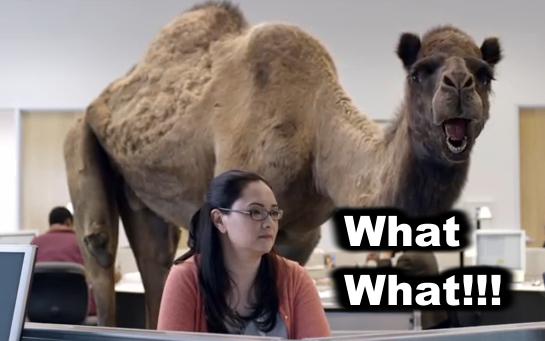Feral camels in the Australian outback are reviled as pests. Yet they thrive, totaling some one million strong.
How did they go from historic helper to overbearing invader? As usual, numbers make the difference.
The deserts of the Australian outback are a notoriously inhospitable environment where few species can survive - but camels can. The dromedary camel (Camelus dromedarius) prospers where others perish, eating 80% of native plant species and obtaining much of their water through ingesting this vegetation.
Yet for ranchers, conservation managers and, increasingly, local and national governments, camels are perceived as pests and they are being shot to reduce their population. This is always startling to urban people but animals lack common sense about birth control, they will boom and bust in cycles until they devastate the ecology. It's possible to spay and neuter pets because they are pets and people will privately pay the cost. Neutering feral camels is dangerous and expensive so shooing them from a helicopter is safer.

Camel or railroad? Camel or railroad? Credit: James Northfield Heritage Art Trust ©
The camel was first brought to Australia in the 1800s, notes Sarah Crowley of the Environment and Sustainability Institute at the University of Exeter's Penryn Campus, when the country was in the midst of a flurry of colonial activity. The animals were recognized by pioneers as the most appropriate mode of transport for the challenging environment because they require significantly less water, feed on a wider variety of vegetation, and are capable of carrying heavier loads than horses and donkeys.
So camels therefore played a significant role in the establishment of Australia's modern infrastructure, including the laying of the Darwin–Adelaide Overland Telegraph Line and the construction of the Transnational Railway, but once that infrastructure was in place, and motorized transport became increasingly widespread, camels were no longer indispensable. In the early part of the 20th century they rapidly lost their economic value and their displaced handlers released them into the outback to graze in freedom, where they thrived.
Camels are not the most dainty of creatures. Dromedaries are on average six feet tall at the shoulder, rendering cattle fencing no particular obstacle to their movement. By some accounts, camels may not even see small fences and consequently walk straight through them. Groups of camels arriving on agricultural properties and settlements in Australia, normally in times of severe drought, can also cause significant damage in their search for water.
It was not until the 1980s that surveys hinted at the true extent of their numbers, and only in 2001 that reports of damage caused by camels were brought to the general populace.
In 2009, a large-scale culling operation began. There were objections from animal welfare groups and some landowners who were concerned that the method of culling from helicopters, leaving the bodies to waste, is inhumane. Most objectors, however, were primarily concerned that culling is economically wasteful and felt that the camels should be mustered for slaughter or export.
There are also concerns regarding the global environment, as camels may contribute to the desertification of the Australian landscape. They are also ruminants and thus produce methane, adding to Australia's carbon emissions, though the environmental impacts of 1,000,000 feral camels pales in comparison to that of the 28,500,000 cattle. Still, cows have value that offset the emissions, so when dust storms gathered over Sydney in 2009, media reports implied that the camel was the culprit.
Now they are referred to as "humped pests," "a plague," a "real danger" and "menacing," and their actions described as "ravaging" and "marauding." As usual, the dose makes the poison.

Why are camels cuter in America? Because there are not a million of them eating the shrubs. Credit: esurance
"These terms show how camels have suddenly been attributed agency – their crossing of acceptable human boundaries is somehow deemed purposeful and rebellious. These accusations lie in stark contrast to the praise laid upon those dromedaries who assisted colonists in the exploration and establishment of modern Australia, and highlight how temporal changes in culture—specifically, shifting economic and environmental values—have affected human interpretations of the presence, purpose, and even behavior of Australian camels," said Crowley




Comments